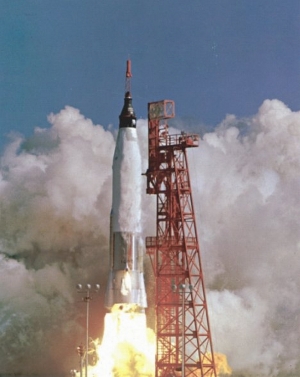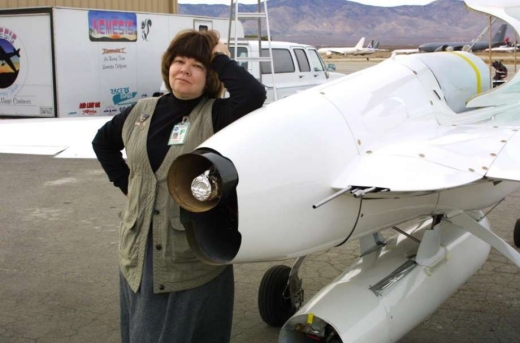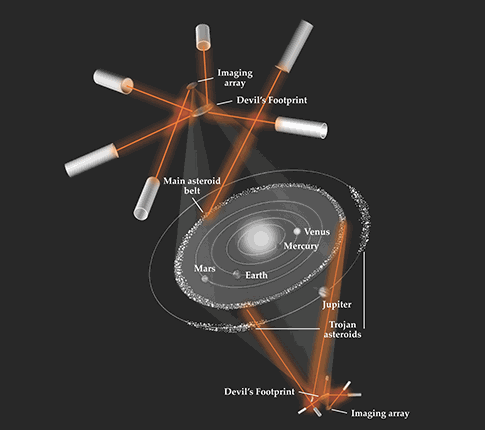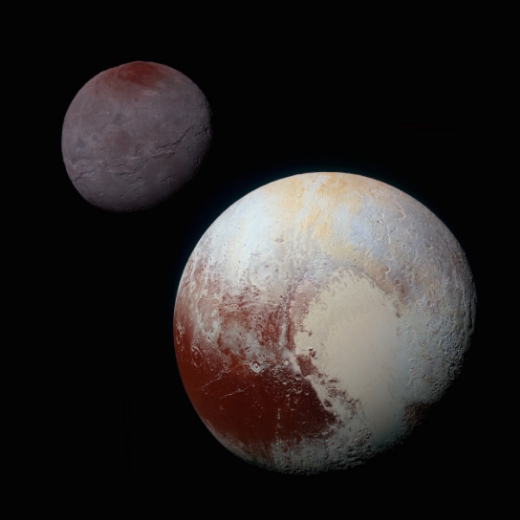Centauri Dreams
Imagining and Planning Interstellar Exploration
John Glenn: An Arc of Fire
John Glenn was 95 when he died, but I have to admit I didn’t think he’d make it to 41. The first American to orbit the Earth was 40 years old when he rode an Atlas rocket into the sky on February 20, 1962. I was a gawky kid, space-crazed, who had read absolutely everything I could find about the space program, and I knew just enough to understand that the Atlas, for all its muscular beauty, wasn’t necessarily the safest thing you’d want to fly.

Our school had set up a black and white television on the stage in the auditorium so we could all see the liftoff, which took place at 8:47 A.M. in St. Louis. In this era of enormous home viewing screens it’s hard to imagine what a single small television could show to an auditorium filled with students, but at the time it was a window into history and we watched avidly as the rocket cut into the sky, and got later updates from teachers as Glenn orbited.
We all assumed the hard part was over after the launch, and I know I was certainly breathing easier, but of course we’ve come to learn that there were concerns about the Friendship 7’s heat shield because of what would turn out to be a faulty indicator. Controllers instructed Glenn to leave the retro-rocket pack on over the shield to help keep it in place, leading to metal straps breaking free during re-entry and banging against the side of the capsule. After splashing down, he would radio: “My condition is good, but that was a real fireball, boy.”
Nor was the heat shield concern Glenn’s only problem. A yaw attitude jet became clogged in his first orbit, forcing the astronaut to take manual control of the capsule. But this was a flier whose instincts were well honed. Flying Corsairs for Marine squadron VMF-155, he would see 59 combat missions in the Pacific, numerous training missions in the years after, and then further duty flying jets in Korea, where he racked up another 90 combat missions. At one point his wingman was baseball legend Ted Williams. In 1957, he would complete the first supersonic transcontinental flight, a feat he managed in 3 hours and 23 minutes.
Glenn’s decision to go into politics may well have originated out of frustration at not being able to get another space mission as the Gemini and Apollo programs advanced, although he also worked for a time as a business executive before making it to the U.S. Senate. He was in an awkward position, with his status as a national hero keeping him out of the active flight roster, although as Centauri Dreams readers know, he would return to space in 1998 aboard the shuttle Discovery, a visit that would make him the oldest person to fly in space.
This New York Times essay by John Noble Wilford captures the character of the man, an iconic figure with a gift for understatement and a hugely likable humility:
Mr. Glenn was reluctant to talk about himself as a hero. “I figure I’m the same person who grew up in New Concord, Ohio, and went off through the years to participate in a lot of events of importance,” he said in an interview years later. “What got a lot of attention, I think, was the tenuous times we thought we were living in back in the Cold War. I don’t think it was about me. All this would have happened to anyone who happened to be selected for that flight.”
We also learn that Glenn was so determined to get into the new astronaut program in 1959 that he put weights on his head, trying to compress himself down to the 5-foot-11-inch maximum required. Like, I suppose, all of the original Mercury 7, Glenn wanted to be aboard the first American flight into space, but these days it’s not Alan Shepard’s suborbital Redstone flight but Glenn’s three orbits that most symbolize the drama of the early program.

And how about this from Wilford’s essay, on the 1983 film The Right Stuff?
Mr. Glenn said he liked the book but not the 1983 movie based on it, in which he was portrayed by Ed Harris. “Most of his account was reasonably factual, although I was neither the pious saint nor the other guys the hellions he made them into,” he told Life magazine in 1998. “Hollywood made a charade out of the story and caricatures out of the people in it.”
I spent the evening recalling that liftoff from Pad 14. Sadness was part of the equation, but I also felt a certain lightness of being. Here was a man who lived well and long, fully 95 years, a man who flew his Beechcraft Baron until he was 90, a man who lived with the woman he loved for 73 years. Who could hope to do better than that? For me, this doggedly courageous man will always be arcing up into a bright February sky. He calls up these lines of Leonardo da Vinci: “Knowing is not enough; we must apply. Being willing is not enough; we must do.”

Photonic Chip Boosts Exoplanet Detection
The Australian Institute of Physics Congress ends today in Brisbane, concluding a schedule of talks that can be viewed here. Among the numerous research presentations was the description of a new optical chip for telescopes that should help astronomers tease out the image of a planet through thermal imaging, nulling out the light of the host star. The new photonic chip could be a replacement for bulk optics at the needed mid-infrared wavelengths.
Harry-Dean Kenchington Goldsmith, a PhD candidate who built the chip at the Australian National University Physics Center, says that the same technology that allows astronomers to penetrate dust clouds to see planets in formation will also be used to study the atmospheres of potentially life-bearing planets. ANU’s Steve Madden describes the chip as an interferometer that “adds equal but opposite light waves from a host sun which cancels out the light from the sun,” making it possible to detect the much fainter light of a planet. He likened the chip’s operation to the methods used in noise cancelling headphones.
This is important work because to understand planet formation, we have to learn more about how planets emerge from the gaseous disk surrounding the parent star. Doing this requires direct imaging at mid-infrared wavelengths, a method that has yielded young planets in formation as well as large exoplanets in distant orbits from their hosts. The next step will be to improve our methods of blanking out the star’s light for better imaging and, as this ANU news release points out, spectroscopic analysis of planetary atmospheres.

Image: The telescope chip developed at Australian National University. Credit: Stuart Hay/ANU.
It turns out that Ronald Bracewell (yes, that Bracewell) discussed these issues back in 1978, proposing what has come to be called the Bracewell nuller, which causes light from a star to destructively interfere, cancelling the star’s light so the planet can be observed. Thinking ahead to our own era of exoplanet discovery, Bracewell suggested using the method as a way to find planets around other stars. Along with a coronagraph (a different technique altogether), a nulling interferometer was considered for use in two high visibility but ultimately cancelled missions, NASA’s Terrestrial Planet Finder and the European Space Agency’s Darwin.
The ANU team brings nulling techniques to a photonic chip. This morning while digging around in the paper on this work, I received a comment from Centauri Dreams reader Mike Fidler, who pointed readers to a shorter (though highly technical) description of the chip in one of ANU’s publications. The key point here is that using photonic chips we can replace some operations normally handled through conventional optics. From the paper on this work:
Photonic integrated circuits are established as the technique of choice for a number of astronomical processing functions due to their compactness, high level of integration, low losses, and stability. Temperature control, mechanical vibration and acoustic noise become controllable for such a device enabling much more complex processing than can realistically be considered with bulk optics.
These are major benefits, making this a technology we’ll continue to follow with interest.
Ronald Bracewell’s original paper on nulling concepts was “Detecting nonsolar planets by spinning infrared interferometer,” Nature 274 (24 August 1978), 780-781 (abstract). For Goldsmith and Madden’s work, see Goldsmith et al., “Chalcogenide glass planar MIR couplers for future chip based Bracewell interferometers,” in Proc. SPIE 9907, Optical and Infrared Interferometry and Imaging V, 990730 (August 4, 2016) (preprint).

Loretta Jackson Delong (1948-2016)
I was saddened to learn through Tau Zero Foundation CEO Rhonda Stevenson of the recent death of Loretta Jackson Delong. Stevenson issued this statement
The Tau Zero Foundation extends its sincerest condolences to Dan DeLong, the XCOR and Agile families for the great loss of Loretta Jackson Delong. She was a pioneer from the start, as she knew from the time she was twelve that she would build and fly spaceships. Through her life’s journey, she repeatedly demonstrated rigor and grit, and she will be missed.
The loss hits home particularly at Tau Zero because Aleta, as she was known to her friends, was a co-founder of XCOR, where she worked closely with co-founder and former CEO Jeff Greason, who is now chairman of the Tau Zero Foundation board. She would go on to collaborate with Greason again in the creation of Agile Aero, a Midland, TX-based startup targeting rapid design and prototyping techniques for space launch, hypersonic vehicles, and innovative aircraft. Greason is CEO of Agile Aero.

The Transterrestrial Musings blog offered more information about Aleta’s background than I had available, so I’m going to draw this directly from the site:
Aleta knew from the time she was twelve that she would build and fly spaceships. Her first professional work was as an engineering co op from Indiana Tech working on the Gemini program for McDonnell. Her engineering degree was cut short when she went home to nurse her mother back to health. After that, she joined the USAF as airman Jackson.
Aleta worked for Xerox for ten years as a repair technician and wrote both science fiction and nonfiction stories. She worked for the L-5 Society, both in Tucson and later in Washington DC. During her stay in DC, Aleta became an aide to General Daniel Graham and helped create the DC-X launch vehicle, later renamed the Clipper Graham. She also edited the Journal of Practical Applications of Space while with Graham’s Strategic Defense Initiative Organization.
As an indefatigable supporter of launch vehicle development, Aleta then became one of Rotary Rocket Company’s first employees, where she was general office manager. When the propulsion group was laid off from Rotary, Aleta was the person who told Jeff Greason, Dan DeLong, and Doug Jones that they had to stick with it, and founded XCOR Aerospace.
In the beginning, because the XCOR founders received no pay, Aleta took an additional job as a reporter/editor of the Mojave Desert News. Meanwhile, she was XCOR’s purchasing, personnel, bookkeeping, editorial, receiving, community outreach, and travel departments. As the company grew, she shed most of these tasks. In late 2015 she helped Jeff Greason start Agile Aero. Aleta was a personal as well as professional partner of Dan DeLong since the early days of Rotary, and they were officially married in 2016. The very next day, however, she was diagnosed with ovarian cancer, and succumbed to complications of the chemotherapy regimen.
And I think Jeff Greason’s comment is well worth quoting from this news story:
“During the time before I came to know her in the late ’80s and early ’90s, the idea of commercial or reusable space vehicles was a lonely idea to be a champion of… She was one of a very small number of people running around and keeping that idea alive. She was never somebody who put her name on the front door, but wherever you turned … you’d find her as the person keeping the community together.”
We now watch commercial space on a vibrant new track of development, making it sometimes easy to forget that the idea had little traction not so many years ago. People like
Loretta Jackson Delong got out in front and made things happen because of their belief in our human future in space and their determination to explore new ways of getting there. Centauri Dreams offers condolences to Dan DeLong, Aleta’s family and all those whose lives she touched.

Up Close at Alpha Centauri
In early December the Harvard-Smithsonian Center for Astrophysics offered as part of its fall colloquium series a talk by Harvard’s Avi Loeb, fortunately captured on YouTube as Project Starshot: Visiting the Nearest Star Within Our Lifetime. We’ve looked at Breakthrough Starshot in many posts on Centauri Dreams, including my reports from the last set of meetings in Palo Alto, but for those new to the concept of using a laser array to send small, instrumented sails to the Alpha Centauri stars, this video is a fine introduction.
You’ll recall that yesterday I talked about Robert Austin’s futuristic Asteroid Belt Astronomical Telescope, with an illustration of what such an instrument might see of the exoplanet Gliese 832c. If Starshot can achieve its goals, it will be able to make out continent sized features on the surface of Proxima b, or perhaps a planet around Centauri A or B. It would achieve, in other words, what it would take a near-Earth space-based telescope 300 kilometers wide to equal.

Image: What we can see today. The NASA/ESA Hubble Space Telescope has given us this stunning view of the bright Alpha Centauri A (on the left) and Alpha Centauri B (on the right), shining like huge cosmic headlamps in the dark. The image was captured by the Wide-Field and Planetary Camera 2 (WFPC2). WFPC2 was Hubble’s most used instrument for the first 13 years of the space telescope’s life, being replaced in 2009 by Wide-Field Camera 3 (WFC3) during Servicing Mission 4. This portrait of Alpha Centauri was produced by observations carried out at optical and near-infrared wavelengths. Credit: ESA/NASA.
Starshot envisions sending swarms of sails to its target stars, each moving at 20 percent of the speed of light. Each four-meter square lightsail would itself be used as the transmitter dish to beam data back to Earth showing us images of the planet, with each sail sending 100 images over the course of its observations. The time frames are interesting: If all goes without a hitch (and it’s hard to conceive of there being no hitches in a plan this ambitious), it will take several decades to build a beamer and create the actual sails and payload.
Then we have a launch, which takes place in a timeframe of minutes, as a mothership in a highly elliptical orbit releases a sail that is then under the beam for an intense 60,000 g ride. You can imagine all the stresses this puts on the sail, and again, we’ve talked about most of these in previous posts, but Avi Loeb’s presentation offers an excellent refresher, covering factors like sail stability under the beam, sail materials and interstellar dust encounters.
The launch phase ends in minutes and a 20 year cruise phase begins. In the Proxima Centauri system after the journey, each sail now faces an encounter time measured in hours. Thus the pattern: Hurry up and wait. For after the flyby, we face more time, a 4.24 year wait for the first images of the planet to come back to Earth. Interestingly, despite moving at relativistic speed, the planet’s image will remain circular thanks to so-called Terrell rotation.
Loeb mentions as a driver for investigation of Proxima Centauri in particular the fact that M-dwarfs make up a huge percentage of all the stars in the galaxy, and they can live for trillions of years. If we learn that life exists around this kind of star, we learn that living things will have incredibly long timeframes to continue to evolve. We also learn that the kind of environments found around red dwarfs are far more common than what we find around our own familiar G-class star. In many respects, we may wind up being the outliers.
Facets of the Journey
Yesterday I asked what effect being able to see images of planets like Proxima b from telescopes in our own Solar System would have on our thinking. Some would argue that we’ll reach the point where we can learn enough about exoplanets in such observations and will not need to build probes to other stars. My own view is that the two prospects work together. I think any images of a living, Earth-like world around a nearby star are going to focus interest in getting a payload into that system in order to make close up imagery and data possible.
On that score, you’ll recall Project Blue, the attempt to build a small space telescope explicitly designed to detect possible planets in the habitable zones around Centauri A and B (see Project Blue: Imaging Alpha Centauri Planets). Documentary filmmakers who are supporting Project Blue bring Debra Fischer (Yale University), one of its key players, into their new short video Traveling to Alpha Centauri? which explores the same terrain.
Although the video suggests antimatter rather than laser-beamed sails as a solution to the propulsion problem, Fischer’s comments go to the question of what the information we gain from our telescopes can motivate us to do.
If we discover an Earth-like planet orbiting Alpha Centauri, this is really going to drive a whole new era in science, an explosion, to finally go out into the galaxy and to start exploring other worlds.
Fischer goes on to speak of a ‘new wave within humanity to begin taking our steps out of our Solar System’ as a part of achieving the destiny of our species. I’m in agreement, and not just at the level of Project Blue. We could know within a decade or so about possible planets in the habitable zones of the two primary Centauri stars, and we may be able not long afterward to begin analyzing their atmospheres. I believe that hints of life on such worlds will ignite the imagination of the general public in support of projects to explore them up close. To me, Breakthrough Starshot and Project Blue, so different in their scale and conception, are nonetheless two sides of the same coin. An exploring species watches, learns and goes.

Thought Experiment: The Asteroid Belt Astronomical Telescope
Could laser light be used to shape and polish an asteroid to high optical standards? That’s the question raised in an imaginative essay in Physics Today that posits the creation, a century from now, of the Asteroid Belt Astronomical Telescope (ABAT). It’s science fiction today, part of the series of speculations that the magazine has been running to explore possible futures, but what a concept for an SF novel, and perhaps someday real astronomy (thanks to Centauri Dreams reader Klaus Seidensticker for sending me the link).
Author Robert Austin (Florida Polytechnic University) creates a backstory involving a “self-described over-the-hill assistant professor at Purdue University” who uses a research grant to polish a 1-centimeter sphere of pyrolytic carbon magnetically levitated in a vacuum. He achieves the needed flat optical surface along with a reflective hemispherical ‘bump’ on the object’s backside that can be used to reorient the mirror by photon pressure.
Soon the idea of using lasers to form and manipulate mirror components takes off, and by the end of the 21st Century an actual 2-meter asteroid is shaped and steered, using equipment originally developed for asteroid mining. The Asteroid Belt Astronomical Telescope that grows out of all this will eventually reach billions of mirror facets in imaging arrays in space, a 5 AU diameter astronomical mirror. Austin’s essay is written as a scientific report from the future, at a time 100 years from now when ABAT is 1% finished but already achieving stunning imagery.

Image: The Asteroid Belt Astronomical Telescope (ABAT) focuses light from laser-polished asteroids onto dual imaging arrays above and below the solar system; other intense laser pulses maneuver the arrays to different locations, thus allowing ABAT to point at multiple celestial targets. Asteroid ablation residue corralled into a pair of Devil’s Footprints shields the focal regions from solar illumination. Credit: Robert Austin/Physics Today.
The ‘Devil’s Footprint’ reference in the caption above is to Munich’s Frauenkirche, which has a part of the floor in which no windows are visible — how it got its name is an entertaining part of the essay, which I’ll send you to for more. The point is that asteroid residue is a helpful way to block sunlight, and by the era depicted in this piece, asteroid mining is assumed to have become so widespread an activity that industrial operations at 5 AU are all but routine.
Bob Forward would, I’m sure, have loved the mega-engineering involved in creating something like this which, if built, would be the most ambitious scientific project ever undertaken. Austin’s ABAT would see its imaging arrays maneuvered through coordinated pulses of laser light, creating minuscule torques to turn each facet in the desired direction. As for enabling this vast cloud of technology to produce the needed data, here’s Austin’s take, based as is the whole article on the assumption of yet to be developed technologies:
Developing a conventional monolithic sensor array to span ABAT’s focal plane would be impractical, so Kim’s team hit upon a new approach based on diatoms, the microscopic organisms with silica skeletons that hold such a special place in the hearts of nanotechnologists. Group biologists genetically engineered diatoms to produce several specialized organs. Some of the organs convert light to electrical signals. Some store the microwave input power necessary for operating the array. Still others use CPS (celestial positioning system) signals to determine three-dimensional location, measure time, and digitally encode the data for transmission.
The result: Trillions of self-reproducing sensors are grown in a vat and deployed in space, manipulated as clouds of microscopic optical sensors.
Image readout begins when maser beams wake the sensors and provide transmission instructions. Guided by the electromagnetic field of the masers, the sensors align themselves toward a receiving antenna to which they beam their data. The vast data set is then relayed to ABAT’s brain, which puts the information together to form an image.

So there you have it, an array of 10 billion asteroids polished into mirror facets, all coordinated through artificial intelligence in a century-long project that might get underway, perhaps, by 2100. It’s a fascinating speculation, and I like the way Physics Today presents these explorations, in the form of articles you might read in the future issue that explains the project at hand. It makes for convincing reading, like good science fiction, and at times, I confess, it does make the hair stand up a bit on the back of the neck. Because imagine what we could see with something this vast, and imagine how much bigger still it could grow.
Image: Imaginary view. The exoplanet Gliese 832c as the future ABAT might see it early in the process of construction. Credit: Robert Austin/Physics Today.
If we ever do begin to see exoplanets at the level of detail promised in the artist’s rendering above, it’s worth speculating on what that might mean for interstellar exploration. Breakthrough Starshot puts the first interstellar crossing somewhere in the latter half of this century, assuming major breakthroughs in laser array technologies and engineering. Would a new ability to see exoplanets like this put a damper on future mission ideas, or would the view of prospective targets actually act as an incentive to get a payload into their systems?

Shifting Perspectives on Pluto’s ‘Heart’
One of the great pleasures of doing this site is watching researchers matching ideas in peer-reviewed papers. A paper can meet the highest standards for publication but still present an argument that subsequent researchers question, igniting a new round of debate. Trying to get at the heart of a scientific question requires patience, but it’s also as absorbing as a chess game, as witness the continuing debate over the history and significance of Pluto’s Sputnik Planitia. And in this case, we have a researcher working both sides of the controversy.
Resembling a polar ice cap, Sputnik Planitia is about 1000 kilometers across, and is centered on a latitude of 25 degrees north and a longitude of 175 degrees. Moreover, it is directly opposite the side of Pluto that always faces Charon, the result of tidal lock. Two weeks ago we looked at the possibility that this western lobe of Pluto’s ‘heart,’ a deep basin filled with frozen gases like nitrogen, carbon dioxide and methane, was the result of a relatively late impact, perhaps one as large as the impact that created Charon. The implications here were striking, particularly the possibility that Sputnik Planitia was a clue pointing to a subsurface ocean (see Pluto: Sputnik Planitia Gives Credence to Possible Ocean for references).
Today we look at a different possibility in a paper from Douglas Hamilton (University of Maryland), who worked with Francis Nimmo et al. on the subsurface ocean paper. The point is, there are dueling explanations here, and we need to examine them both along with any other potential candidates to explain Sputnik Planitia. After all, it’s a huge feature, and we find ice caps on only three worlds in our Solar System, making its formation a matter of interest whether or not its presence actually indicates an ocean beneath the ice.

Image: Pluto, shown here in the front of this false-color image, has a bright ice-covered ‘heart.’ The left, roughly oval lobe is the basin provisionally named Sputnik Planitia. Sputnik Planitia appears directly opposite Pluto’s moon Charon (back). Credit: NASA/JHUAPL/SWRI.
The model Hamilton studies in this paper is one in which there is no impact, and the ice cap actually formed early in Pluto’s development, providing the surface asymmetry that eventually causes the ice cap to become locked on the side of the world opposite Charon. Remember that Pluto’s spin axis is tilted to 120 degrees. Ice would form in the coldest places on the planet, which in Pluto’s case are latitudes 30 degrees north and south. Temperatures here are far colder than either pole, a zone that includes latitude 25-degree north Sputnik Planitia.
Hamilton and colleagues see a runaway albedo effect as a possibility here, a positive feedback mechanism that begins with a small ice deposit and accumulates more and more ices until a dominant ice cap emerges. It is the gradual shift in the dwarf planet’s mass, then, that came into play to ensure that Sputnik Planitia would, as Pluto slowed due to Charon’s gravity, either face Charon or emerge on the opposite side of the world from its moon. The chances are 50-50, as Hamilton notes: “It is like a Vegas slot machine with just two states, and Sputnik Planitia ended up in the latter position, centered at 175 degrees longitude.”
So there we have it, a new possibility in which Sputnik Planitia formed not through an impact, but through the weight of accumulating surface ices. The formation of a basin like this one is not so different from what we see on Earth in the Greenland Ice Sheet, where a basin forms and pushes down on the crust beneath it, although Hamilton adds that Pluto’s basin is larger than the volume of ice it currently contains, evidence that Sputnik Planitia is losing mass over time. Either formation model fits the New Horizons data, leaving us with an inconclusive result about that putative ocean. Under the right conditions, says Hamilton, either model is viable.
The paper is Hamilton et al., “The rapid formation of Sputnik Planitia early in Pluto’s history,” Nature 540 (01 December 2016), 97-99 (abstract).


